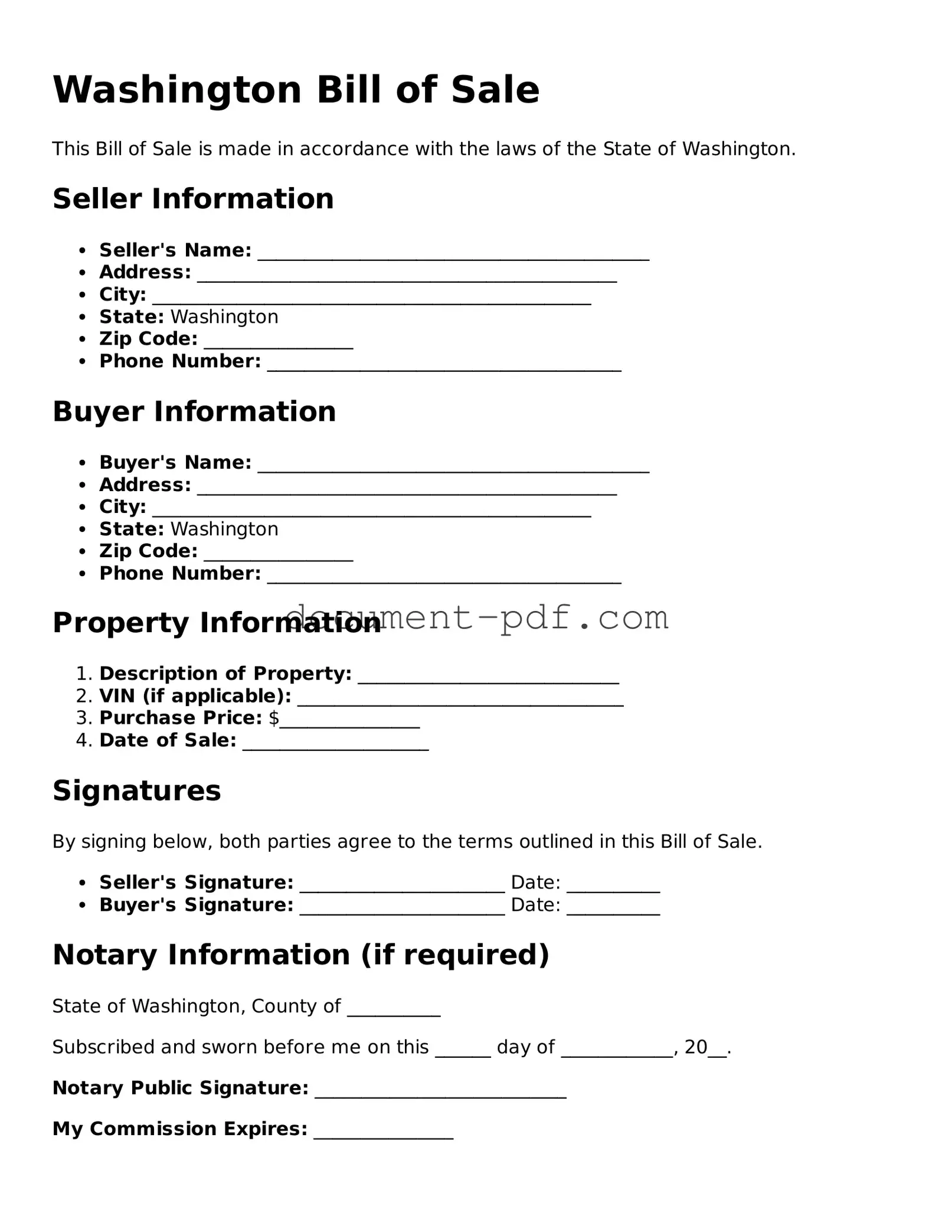The Washington Bill of Sale form serves as a crucial document for transferring ownership of personal property, particularly vehicles. Similar to a bill of sale, a vehicle title transfer form is essential when a vehicle changes hands. This document provides the necessary information about the vehicle, including its identification number and the names of the buyer and seller. Both documents protect the interests of the parties involved by documenting the transaction and ensuring that the buyer has clear ownership rights over the vehicle.
Another document closely related to the Bill of Sale is the purchase agreement. This agreement outlines the terms and conditions of a sale, including the price, payment method, and any warranties. Like a bill of sale, it serves as a record of the transaction. However, the purchase agreement typically precedes the bill of sale and is often more detailed, covering aspects such as contingencies and timelines for the transfer of ownership.
The promissory note is another document that shares similarities with the Bill of Sale. This note is used when the buyer agrees to pay for the property over time, rather than in a lump sum. While the bill of sale finalizes the transfer of ownership, the promissory note establishes the buyer's obligation to pay the seller. Together, they provide a comprehensive understanding of the sale and payment terms.
In the realm of real estate, a quitclaim deed is akin to the Bill of Sale. This legal instrument transfers interest in property without guaranteeing the title's validity. Both documents facilitate the transfer of ownership, but the quitclaim deed is specific to real estate transactions. It is often used among family members or in situations where the parties trust one another, similar to how a bill of sale operates in personal property transactions.
Another document that functions similarly is the lease agreement. While a lease typically outlines the terms for renting property rather than selling it, it shares the same goal of defining the relationship between the parties involved. Both documents establish the rights and responsibilities of the parties, ensuring clarity in the transaction. A lease agreement may also lead to a bill of sale if the lessee decides to purchase the property at the end of the lease term.
The affidavit of ownership is also related to the Bill of Sale, particularly in situations where proof of ownership is required. This document allows an individual to declare their ownership of an item, often used when a bill of sale is not available. While the bill of sale serves as a formal record of the transaction, the affidavit provides a sworn statement of ownership, which can be crucial in disputes or legal matters.
In the context of firearms, a firearm transfer form is similar to the Bill of Sale. This document is used to record the transfer of ownership of a firearm from one individual to another. Like the bill of sale, it includes details about the parties involved and the item being transferred. This ensures compliance with legal requirements and helps maintain a record of ownership, which is particularly important in the regulated environment of firearm sales.
The Washington Bill of Sale form is not only vital for vehicle transactions but also parallels other important documents regarding property transfer, such as the General Bill of Sale. A General Bill of Sale is comprehensive as it applies to a variety of personal property, serving as proof of ownership transfer between parties. For those interested in accessing a template for this essential document, you can find it at Legal PDF Documents, which offers a straightforward approach to documenting sales effectively.
Finally, a consignment agreement is another document that parallels the Bill of Sale. In a consignment arrangement, one party (the consignor) gives possession of an item to another party (the consignee) for the purpose of selling it. Both documents facilitate the transfer of rights, but while a bill of sale indicates a complete transfer of ownership, a consignment agreement retains ownership with the consignor until the item is sold. Each document serves to clarify the relationship and expectations between the parties involved in the transaction.
